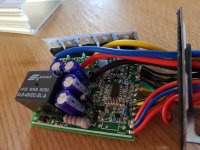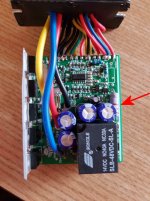Hello all,
Ive bought 2 Controllers (48v 30amp)
Ive modded the shunt, but i have problems adding more volt than 48v to one of them.
They are pretty much the same. They are made for cheap Electric scooters. Like Evo scooter.
One of them can be overvolt as much as i want, but the other only accept 6v extra (max 54v).
Whats is limiting it to only 54v? Are there any mod i can do to make it handle more than 54v like the other Controller?
Thanks for all replies
Pota
Ive bought 2 Controllers (48v 30amp)
Ive modded the shunt, but i have problems adding more volt than 48v to one of them.
They are pretty much the same. They are made for cheap Electric scooters. Like Evo scooter.
One of them can be overvolt as much as i want, but the other only accept 6v extra (max 54v).
Whats is limiting it to only 54v? Are there any mod i can do to make it handle more than 54v like the other Controller?
Thanks for all replies
Pota





